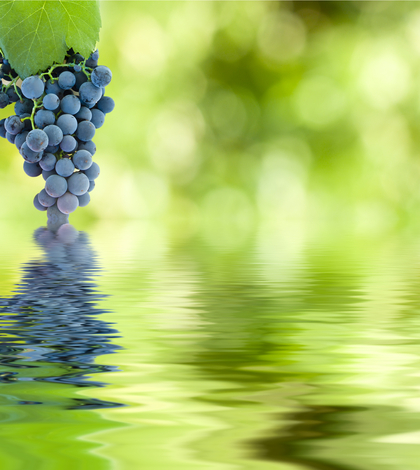“We had stable groundwater resources even during the drought, but the high amounts of rainfall this winter ensured that groundwater resources were recharged and aquifers refilled. That’s good for Napa,” said Garrett Buckland, president of Napa Valley Grapegrowers and partner at Premiere Viticultural Services.
Buckland’s summation of Water Year (WY) 2016-17 has allowed for abundant grape crops this year and the 2017 Napa Valley winegrape harvest has begun in earnest. The first grapes for the Napa Valley’s sparkling wine were picked beginning Aug. 7 and grapes for other varieties are now being harvested. Some varieties, like pinot noir, chardonnay and sauvignon blanc are just now starting to come in. In the coming weeks, Napa Valley grapegrowers will start harvesting the red varieties: cabernet sauvignon, merlot, petit verdot, malbec and cabernet franc will be ready to be picked.
Vintners throughout the Napa Valley are gearing up to receive their grape harvest. Preparations for the harvest are also underway at wineries with energy-saving cleaning and sanitizing practices. For the region’s more than 60 Napa Green Wineries water and energy-saving practices include: sanitizing barrels with steam rather than washing them with water; using on-site water treatment systems that capture and recycle rinse water; and replacing standard tank and equipment cleaning products with biodegradable ones.
WY 2016-17 replenished reservoirs and recharged vineyard grounds throughout the Napa Valley and allowed growers to begin the year with optimism. Tiny buds emerged in mid-March from the dormant vines. Bud break was consistent and the light early spring rains dashed the concerns of frost. Vines sprang to life in mid-May. After five-plus years of drought conditions the drought-busting rain this year provided ample water. Along with moderate sunny days and long days of canopy management in June and July optimal grape development is now evident.
Buckland noted, “We expect exceptional quality due to timely vineyard work and weather. Early heat events resulted in vigorous vine growth, where keeping up with canopy management was key. In the early stages of berry ripening, when it matters most, we experienced fantastic weather with no major heat spikes.”
The winter rains have also provided healthy soil moisture levels that acted as natural heat barriers for vineyards when heat spikes did occur. The vineyards have experienced bloom and fruit set under ideal conditions – no frost, no late rains and no blistering winds.
“Harvest only comes around once a year,” said Michael Honig, president of his family’s Honig Vineyard & Winery and 2017 chair of the Napa Valley Vintners Board of Directors. “We have just one shot with each vintage to make the best possible wines. Winemaking can be resource-intensive, so it’s also a great time to employ sustainable practices that help protect and preserve Napa Valley for generations to come.”
 California Water News Daily Your Source For Water News in California
California Water News Daily Your Source For Water News in California


